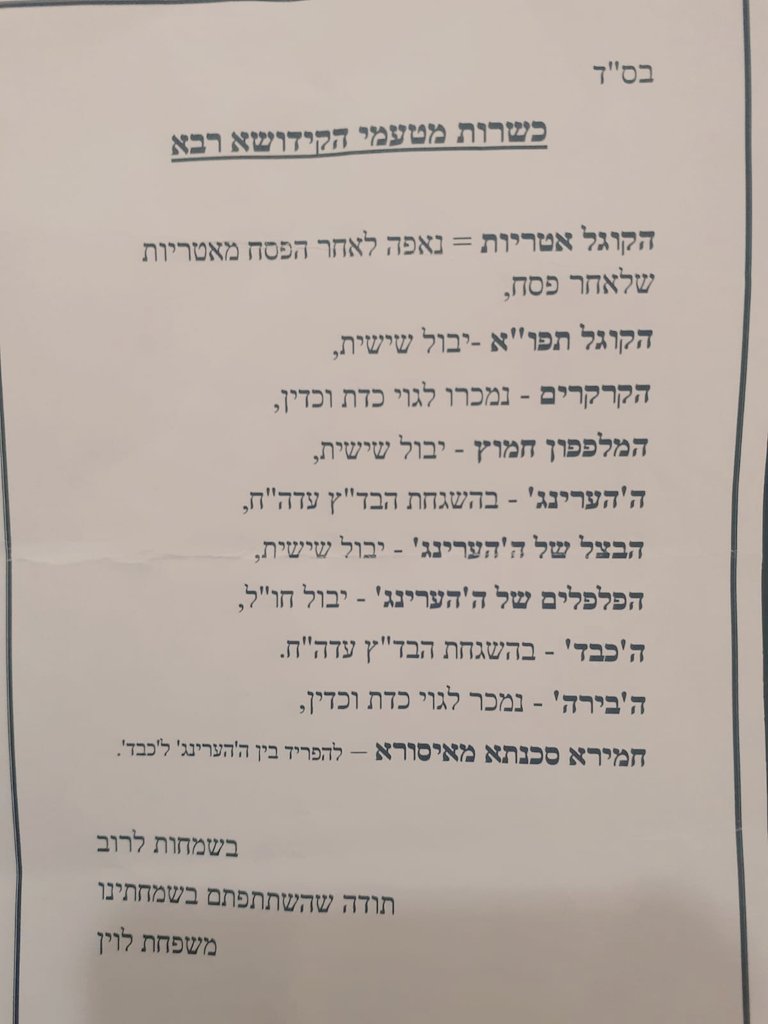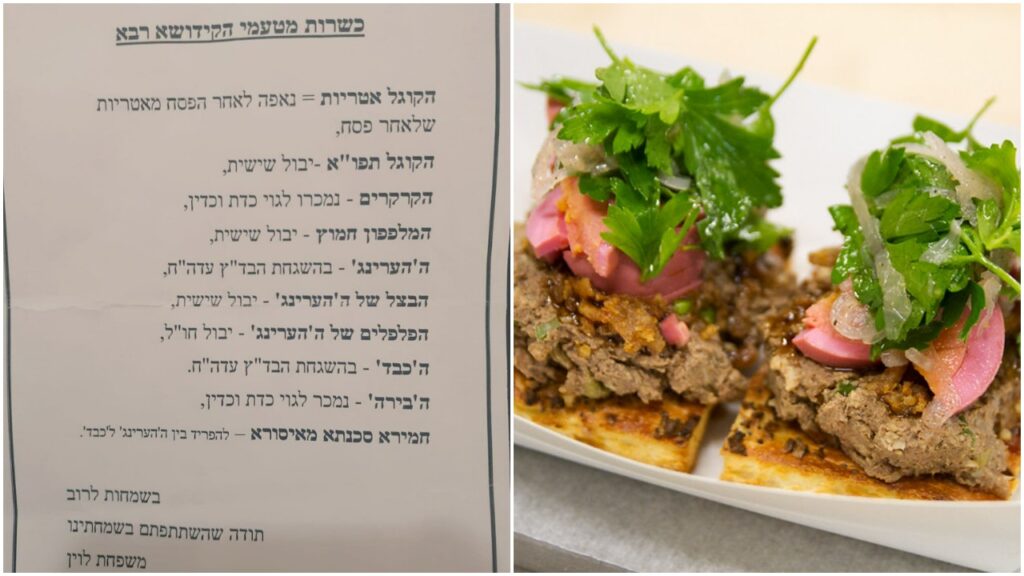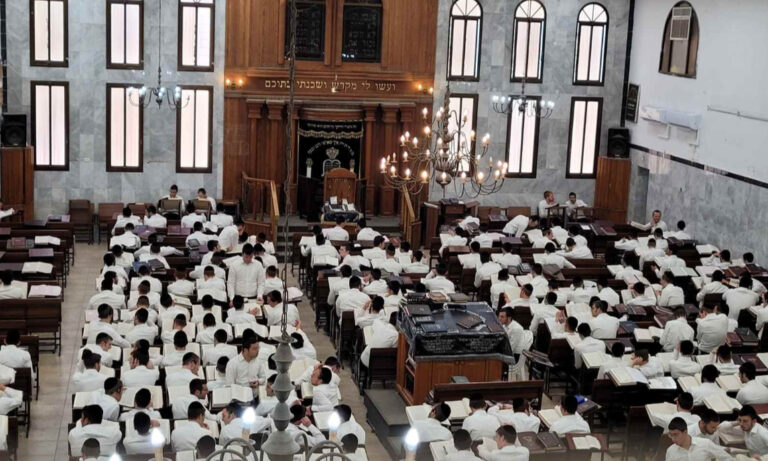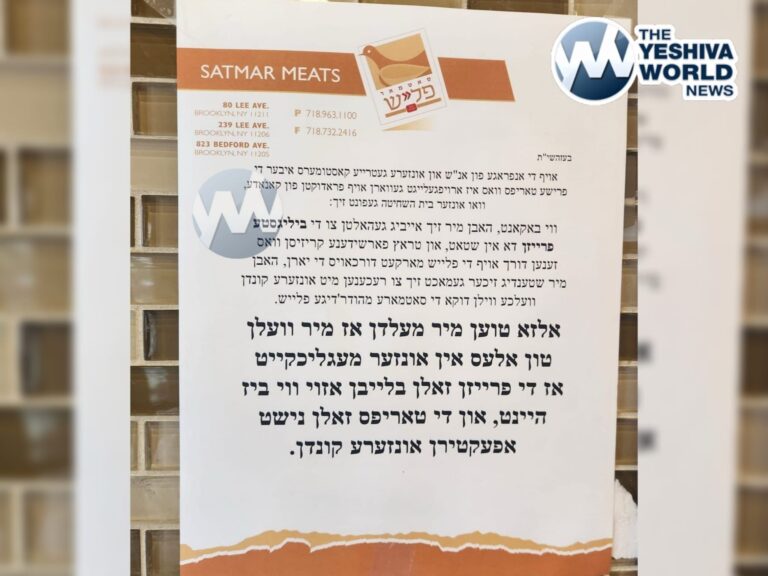A B’Chadrei Chareidim reporter on Sunday posted a photo of a notice hung up in a shul in Beitar in preparation for a kiddush this past Shabbos – the Shabbos after Pesach.
The notice lists the foods being offered at the kiddush. Apart from the herring and liver, which are listed as being certified by the Badatz Eidah Hachareidis, the other foods items on the list have their shemittah or “after Pesach” status specified, such as yivul shishis, yivul chol, “sold to a goy” or “baked after Pesach from noodles manufactured after Pesach.”
The final item on the list, which was prepared by the hosts, the Levin family [who apparently have a good sense of humor] is “foods that are forbidden due to sakana.” Under that category is the instruction: “Separate between the herring and the liver.”

Bon Appétit!
(YWN Israel Desk – Jerusalem)












8 Responses
Kiddusch after Pessach I assume to mean כ”ב ניסן the very 1st שבת after פסח
Good one! Are you sure they didn’t add in baked after Pesach from noodles that was made from flour ground after Pesach (neefa venitchan)?? Some people are super stringent about this. Even though today you can get vacuum packed flour that was ground without any liquids in the vicinity so you can even have closed packets in your cupboards (for those who don’t sell chometz products in their house) apparently not all manufacturers are particular about this, so they will sell products baked after pesach but not ground from flour after pesach….
its as complicated as you choose to make it. you know who your hosts are and their standards of kashrus. nuff said
What was funny?
Chaylev Halyah: YWN is sponsoring a series of therapeutic workshops to help those who lost their sense of humor due to Covid-related conditions. All the proceeds go to the the editors’ favorite mosdos.
It was not a joke, silly. That’s the halacha, for you amaratzim. Hering is fish and liver is meat.
To Golden Middle Way:
>> Even though today you can get vacuum packed flour that was ground without any liquids in the vicinity so you can even have closed packets in your cupboards (for those who don’t sell (keep) chometz products in their house) <<
Actually, the flour is “bleached,” so chametz problematic. Beware.
No, 147, if the lockshen in the kugel were manufactured after Pesach, then it cannot have been the day after Pesach, it must have been the following Shabbos, a week after Pesach.
(Everything else could have been on the day after Pesach. They could have obtained chometz from the goy, in anticipation of paying him for it after Shabbos.)